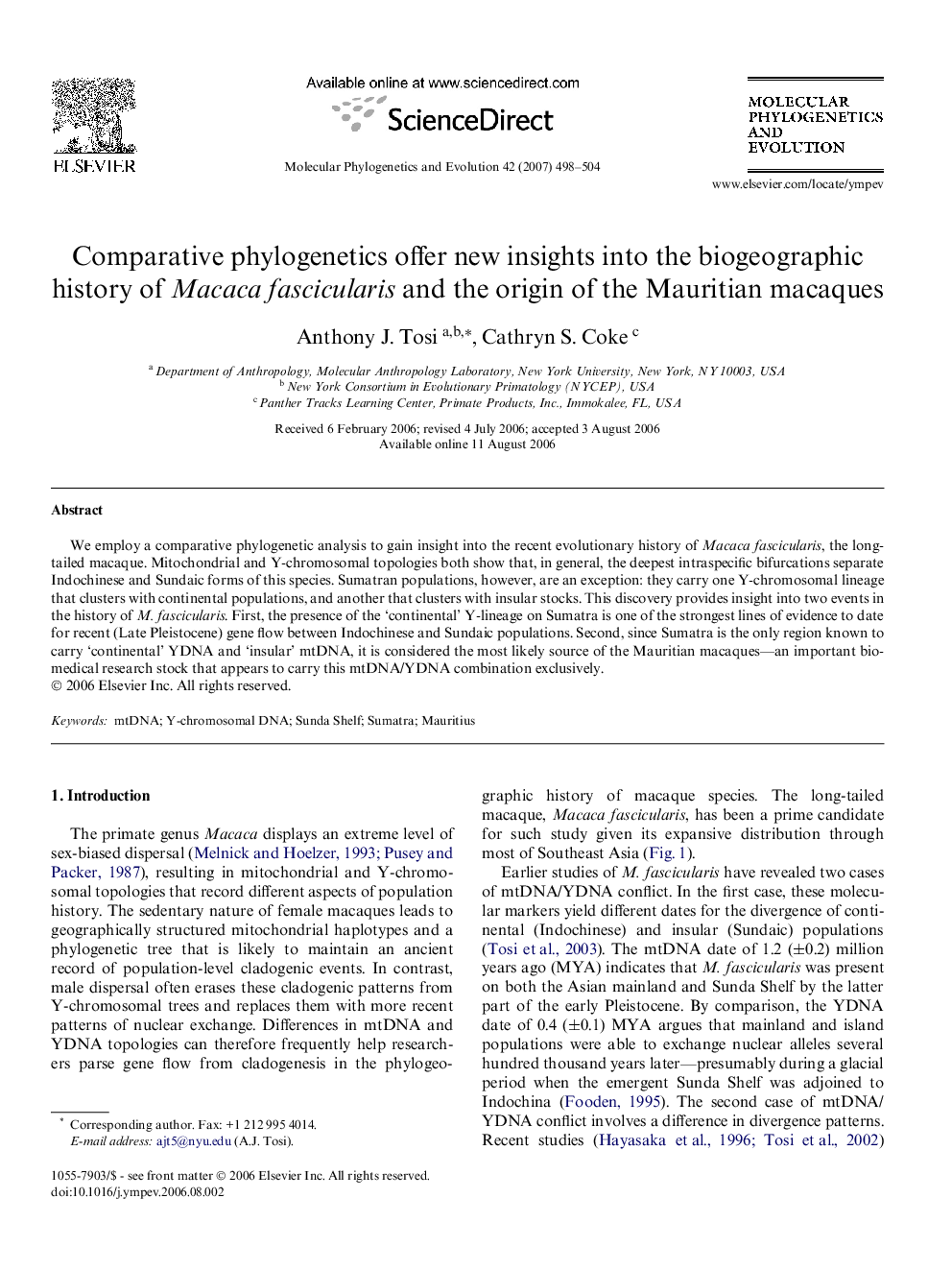| Article ID | Journal | Published Year | Pages | File Type |
|---|---|---|---|---|
| 2835531 | Molecular Phylogenetics and Evolution | 2007 | 7 Pages |
We employ a comparative phylogenetic analysis to gain insight into the recent evolutionary history of Macaca fascicularis, the long-tailed macaque. Mitochondrial and Y-chromosomal topologies both show that, in general, the deepest intraspecific bifurcations separate Indochinese and Sundaic forms of this species. Sumatran populations, however, are an exception: they carry one Y-chromosomal lineage that clusters with continental populations, and another that clusters with insular stocks. This discovery provides insight into two events in the history of M. fascicularis. First, the presence of the ‘continental’ Y-lineage on Sumatra is one of the strongest lines of evidence to date for recent (Late Pleistocene) gene flow between Indochinese and Sundaic populations. Second, since Sumatra is the only region known to carry ‘continental’ YDNA and ‘insular’ mtDNA, it is considered the most likely source of the Mauritian macaques—an important biomedical research stock that appears to carry this mtDNA/YDNA combination exclusively.
